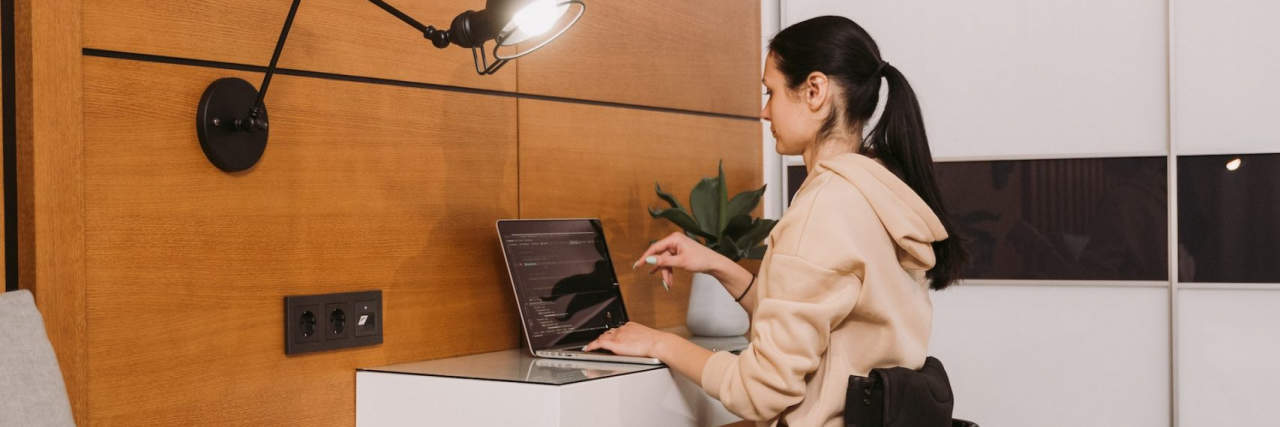14 Ways to Enhance Accessibility and Well-Being With Home Renovations
Editor's Note
We hope the products below help you or a loved one in your health journeys. Just so you know, The Mighty may collect a share of sales from the affiliate links on this page. As an Amazon associate, we earn from qualifying purchases.
We spend a great amount of time in our homes, so setting our spaces up for comfort and accessibility is important. For those with physical and cognitive disabilities or mental health challenges, a well-designed residence can make the difference between liveability versus having to deal with daily challenges in getting around. Simple remodels and updates could deliver the necessary changes to make your spaces habitable. Consider these updates around the home for enhancing well-being and improving accessibility for those with disabilities.
Why make changes for well-being and disability?
Remodeling can make your home a healthier, liveable, and accessible place, especially for household members with physical or cognitive impairments. For example, adding an elevator to a multi-story property can allow those with disabilities to live more comfortably and independently, by improving access to other floors.
These changes improve liveability and could even increase property values. Also, those aging are more likely to stay in their homes since the property fulfills their changing needs over a longer period of time. As for interior design and ambiance, these elements can have a strong impact on well-being and mental health. A well-designed space could help lower stress, anxiety, and depression.
14 remodeling ideas for health and accessibility
Consider these strategies to make your home more healthful, accessible, and liveable for those with disabilities.
Calm areas
Introduce calm areas that are free of digital distractions. These can be balconies, outdoor living areas, or quiet rooms. Here, you can relax, socialize, and interact with family and friends. Alternatively, you could meditate, read, or spend some quiet time by yourself.
Lighting
Light, especially natural light, can have a positive impact on mood and mental well-being. Minimizing light at night is essential for our circadian rhythms. Use window dressings and rearrange furniture to bring in daylight and shade against outdoor lighting at night and intense sunlight during the day.
Nature
Elements of nature or even simple reminders can have a positive impact on mental and physical well-being. Bring nature into your home with potted plants. Also, consider using natural materials for furnishings and hanging paintings and artwork that remind you of nature.
Pathways
Update the paving on your outdoor access paths with solid, nonslip materials, or treat surfaces to reduce slipping. These should be highly visible and well-lit at night.
Entries and doorways
Widen your entrances for wheelchair accessibility. The same can be done for interior doors and passageways. Make sure at least one toilet, one bedroom, and all key living spaces like the kitchen have widened doorways. Swing-clear hinges can make door openings wider without cutting into the door frame.
Peepholes
Install an extra peephole at a reachable height for those in wheelchairs. This should range from 43 to 51 inches (109 cm to 130 cm) above ground. A second accessible peephole can support better security by allowing the resident to see and speak to visitors without having to open the door. Alternatively, you can install a doorbell camera.
Door locks and handles
Lock and handles should be fitted at a height reachable for those in wheelchairs. Use lever handles instead of doorknobs so those with arthritic hands or other dexterity challenges can easily grip them.
Light switches
Light switches should be at an accessible level. Ideally, these are two-way rocker switches, with an additional switch located within reach of the bed. Install plenty of lighting to support anyone with vision impairments. Alternatively, you can use smart outlets or smart light bulbs to control lighting by app or voice.
Kitchen
Counters can be lowered to facilitate wheelchair users. Essentials can be kept in lower drawers or shelves for easy reachability. It’s a good idea to use pop-up and roll-out shelving and lazy Susan cabinets to maximize accessibility.
Bathrooms
Bathrooms need to have nonslip surfaces. Showers, baths, and toilets should have grab rails. Showers can be fitted with bench seats for those who need to be seated while showering.
Garage
Electronically operated garage doors are essential, as is ensuring there’s sufficient space left for wheelchair access. Generous spacing also supports those who are using walkers.
Lifts
If you’re living in a multilevel home, consider installing a lift or a staircase lift for wheelchair users.
Stairs
Handrails are vital for stairs. If you have wide stairs, install handrails on both sides.
Semi-independent living areas
If you have an elderly relative or adult child with disabilities living at home, fostering independence is key. Create self-contained bedrooms, ideally with attached bathrooms, for autonomy and privacy. Alternatives include a granny flat or a converted basement. Furnish their living areas with items like fridges, microwaves, washing machines, and other conveniences for semi-independent living.
Well-being and accessibility upgrades for liveability
Simple changes like creating calm areas, incorporating nature into a space, and allowing in natural light can make your home’s interiors supportive of well-being. When introducing upgrades to accommodate those with disabilities, look at adapting outdoor pathways, entry points, and doors.
Everything from your garage and kitchen to bathrooms and bedrooms can be updated with relatively straightforward changes to make them more welcoming for family members with disabilities.
Photo by MART PRODUCTION via Pexels.

